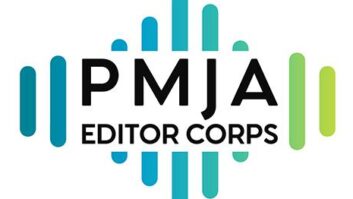ZURICH, SWITZERLAND, February 15, 2018 — Non-profit radio engineering and policy training group International Media Action (IMA) provides consulting and implementation services to help build FM stations for organizations with educational or activist missions. Looking to overcome reliability issues with its initial, software-based studio-transmitter link (STL) methods while maintaining affordability for its non-profit clients, IMA turned to Barix Audio over IP solutions and has successfully deployed them at more than 30 stations around the world.
Founded by SBE-certified broadcast radio engineer and community radio policy advocate Pete Tridish, Philadelphia-based IMA assists non-profit groups with planning, construction, equipment procurement and training for start-up radio stations. IMA also provides a complete set of engineering services for antenna and transmitter installations, studio-transmitter links, studios and more. IMA has worked on community radio projects spanning the globe, from the U.S. and Nicaragua to Tanzania and Tunisia.
Tridish first turned to Audio over IP as the foundation for studio-transmitter links for cost-driven reasons. “I needed an affordable STL solution that fit the limited budgets of our non-profit station clients, who don’t have the benefit of commercial funding,” he explained.
Tridish originally used custom Linux-based software running on general-purpose computers, but soon encountered significant reliability problems. “No matter how much effort the programmers put into the robustness of their software code, we’d have systems running fine for a few weeks and then failing,” Tridish recalled. “Often, the problem would have nothing to do with the STL streaming software, but would be caused by an operating system update that required action by the user. When you’re using an all-purpose computer that’s not dedicated to the task, something totally unrelated can cause major issues for your audio.”
Looking to replace the software approach with a dedicated product, Tridish found the Barix Exstreamer family to be ideal for his clients’ needs. “The Barix units are dedicated to just audio delivery, and won’t stop doing it just because something else happens,” he said. “The Exstreamers’ ability to reconnect themselves without user intervention if something goes wrong with the connectivity between them is also a big plus, and makes it a lot easier for me.”
Barix not only delivered the robust reliability he was looking for, but did so at an easily accessible price point. “Cost is a key factor given the non-profit nature of my clients, who couldn’t afford to get their stations on the air if the price was two to three times higher like alternative approaches,” said Tridish. “Linking studios and transmitters used to be a big challenge, as the cost of the STL with traditional methods could be almost as much as everything else in the station combined. It’s also not so easy to get microwave frequencies coordinated any more, and some places have no frequencies available. Using IP audio with the Barix units eliminates that problem while making STL affordable.”
Even when IMA’s clients had higher budgets available, Tridish still chose the Barix products as the optimal fit. “I’ve experimented with more expensive products, but I didn’t find them to work any better, and many of them were much more complicated to set up and maintain,” he explained. “For my purposes, the Barix units have always worked well, at a much better price than alternative products or methods.”
Not needing the advanced features of Barix’s higher-end offerings, IMA most often deploys lower-cost Barix Exstreamer 100 models. To give Tridish maximum control of the connectivity between the units at the endpoints, he uses Ubiquiti Networks NanoBeam microwave dishes and Rocket M5 base stations to form line-of-sight wireless LANs between the studio and transmitter sites whenever possible. “The Internet is much better than it used to be, but I still don’t like that it has so many factors that are out of my control,” he said. “I don’t want my radio projects to be judged or affected by any issues with the connectivity provided by the ISP, so I only use standard Internet links when I can’t get line-of-sight.”
Last but certainly not least, Tridish also praises the service he receives from Barix. “Their technical support has been fantastic, totally willing to help out with problems like general networking issues even though they aren’t directly related to the Barix product itself,” he said. “Having that level of support makes me much more confident walking into a client job, as I don’t need to be a networking expert, but I still know it’s going to work.”
Barix: We Move Audio (www.barix.com)
Barix supplies simple and reliable solutions and components to systems integrators and end users worldwide. We move high-quality audio across IP networks, adding value to customer solutions for more than a decade with hundreds of thousands of devices installed worldwide. Background music distribution with dynamic advertising insertion for retail shops, bars and hotels; public address solutions for schools and public spaces; and intercom and entry systems for facility surveillance, protection and security are among the many applications of Barix solutions. Barix also supports OEM projects for a number of Global 500 listed companies serving many industries worldwide.







